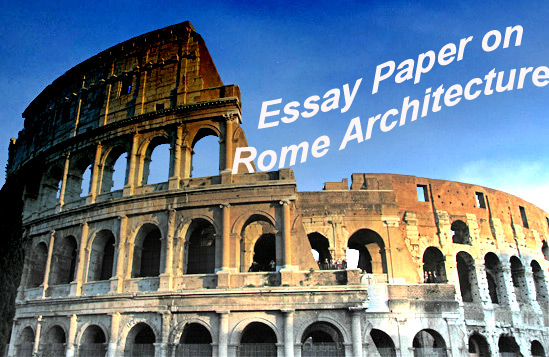
Essay Paper on Rome Architecture
…Christianity is now a world religion that influenced almost all spheres of our lives. In course of history Christian traditions have become part of art, architecture, music etc. The key idea of Christianity is afterlife and saving for all those who would accept God in their real life. Hence, there are many Christian traditions that concern afterlife and commemoration of the dead.
 The Roman Empire could not avoid Christianity that was growing increasingly popular at that time. Christianity needed buildings for special ceremonies and rituals. Christian architecture is so much different from that of pagan. Basilicas and Christian churches are designed to emphasize Christian dogmas and traditions.
The Roman Empire could not avoid Christianity that was growing increasingly popular at that time. Christianity needed buildings for special ceremonies and rituals. Christian architecture is so much different from that of pagan. Basilicas and Christian churches are designed to emphasize Christian dogmas and traditions.
Below are some examples of architecture influenced by Christian views and ideas of afterlife. The first Christian architects set out to compose spaces which imitated and intimated that universe in both transcendent and symbolic terms. In churches, memorials, and shrines they sought to capture and expound the central convictions of faith, and that quest set Christian architecture apart from the architecture of the past. Not only were congregations given places for assembly and worship; more important, the buildings scaled down and made viable the abstract immensity of the fundamentals declared by the new religion, and each visual element, whether decorative or more purely architectural, was played to that end. During the fourth and fifth centuries, as dogma and liturgy were given authoritative form, dispositions of shapes and spaces were created which prefigured nearly the entire repertory of Christian building. The majestic architecture of the GrecoRoman world was succeeded by an architecture which proposed an entirely different purpose and meaning. Yet early Christian and Byzantine architecture inevitably evolved many forms, visual effects, and structural solutions from those already in existence, and it can be comprehended only if that background is taken into consideration.
As the State hoped for the efficacy of the support of the Church, so the Church sought to make use of the established and familiar net of government; if each at times tried most energetically to change the ways of the other, this did not sunder their close and indeed necessary liaison. The Church, the Christianity of men and institutions, came of age in the world of the Late Roman Empire, to which it was inextricably tied. That world was a curious amalgam of sophistication and barbarity. It was at once weary and energetic, stultified and creative. Through much of its fabric, its currents and forces were at cross-purposes and not the least of the objectives of the Church was to unite and redirect those forces with a fresh view and will.
The new faith spread most rapidly in the Hellenistic east and in Italy, and in those lands the first monumental Christian architecture appeared. From them it radiated, meeting and coalescing with varied local solutions. Almost all this architecture was collaterally related, having a common source in the architecture of the last two centuries of the pre-Christian Empire. A superbly creative style, in sharp contrast to the many clouded and uncertain aspects of the world in which it stood, that late Roman architecture was one of the prime achievements of ancient society; in it a major part of the formal patterns of Christian architecture can be discerned…
This is just a free sample of the research paper, or part of the research paper on the given topic you have found at ProfEssays.com. If you feel you need professional writing assistance contact us! We will help you to create perfect research paper on any topic. ProfEssays.com – Leading custom essay and dissertation writing company and we are 24/7 open to serve you writing needs!
Don‘t hesitate! ORDER NOW!
 + 1-888-827-0150
+ 1-888-827-0150 + 44-20-3006-2750
+ 44-20-3006-2750










